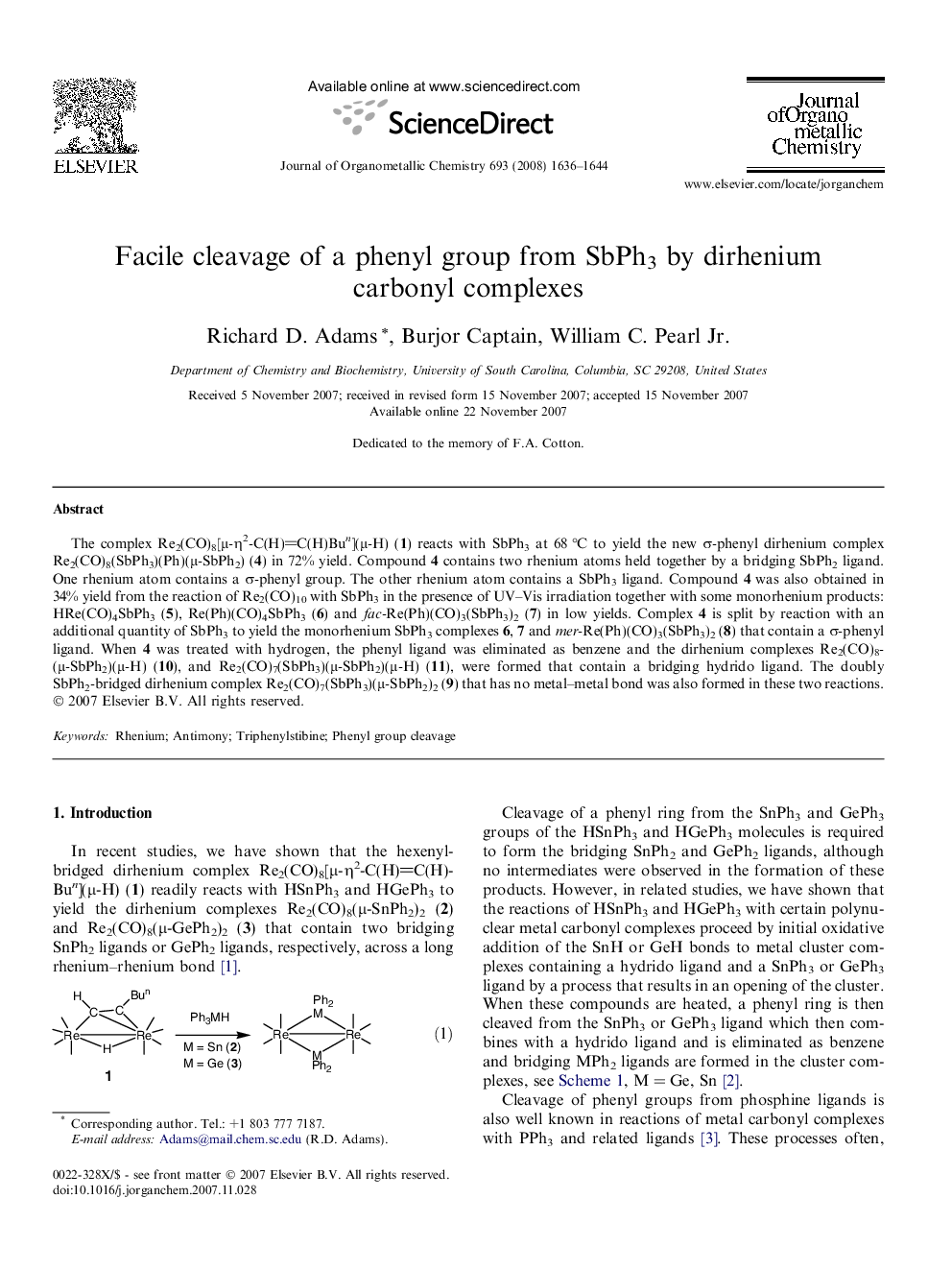| Article ID | Journal | Published Year | Pages | File Type |
|---|---|---|---|---|
| 1328001 | Journal of Organometallic Chemistry | 2008 | 9 Pages |
The complex Re2(CO)8[μ-η2-C(H)C(H)Bun](μ-H) (1) reacts with SbPh3 at 68 °C to yield the new σ-phenyl dirhenium complex Re2(CO)8(SbPh3)(Ph)(μ-SbPh2) (4) in 72% yield. Compound 4 contains two rhenium atoms held together by a bridging SbPh2 ligand. One rhenium atom contains a σ-phenyl group. The other rhenium atom contains a SbPh3 ligand. Compound 4 was also obtained in 34% yield from the reaction of Re2(CO)10 with SbPh3 in the presence of UV–Vis irradiation together with some monorhenium products: HRe(CO)4SbPh3 (5), Re(Ph)(CO)4SbPh3 (6) and fac-Re(Ph)(CO)3(SbPh3)2 (7) in low yields. Complex 4 is split by reaction with an additional quantity of SbPh3 to yield the monorhenium SbPh3 complexes 6, 7 and mer-Re(Ph)(CO)3(SbPh3)2 (8) that contain a σ-phenyl ligand. When 4 was treated with hydrogen, the phenyl ligand was eliminated as benzene and the dirhenium complexes Re2(CO)8(μ-SbPh2)(μ-H) (10), and Re2(CO)7(SbPh3)(μ-SbPh2)(μ-H) (11), were formed that contain a bridging hydrido ligand. The doubly SbPh2-bridged dirhenium complex Re2(CO)7(SbPh3)(μ-SbPh2)2 (9) that has no metal–metal bond was also formed in these two reactions.
Graphical abstractA series of mono- and dirhenium complexes containing σ-bonded phenyl groups have been obtained from the reaction of Re2(CO)8[μ-η2-C(H)C(H)Bun](μ-H) (1) and Re2(CO)10 with SbPh3.Figure optionsDownload full-size imageDownload as PowerPoint slide
